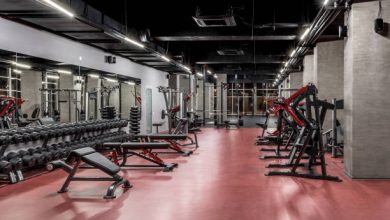Maintaining Thermal Comfort for Better Mental Health

Thermal discomfort may have a significant influence on a worker’s overall productivity. It may give rise to employee dissatisfaction, frustration, and absenteeism because extended exposure to thermal discomfort might cause weariness and reduced concentration. People working in extreme weather conditions know the importance of thermal comfort for better concentration and productivity. Thermal comfort is a subjective evaluation of how satisfied you feel in the warmth of an environment. It characterizes the mental state of a person as being overly hot or cold.
When thermal conditions exceed the parameters of comfort, the health risks for employees increase. A person is more likely to become ill or suffer from serious health issues when exposed to extreme weather conditions or the environment. In discomfiting situations, people have scant to no tolerance, so their performance drops even with minor deviations from comfort. Maintaining thermal comfort for better mental health is critical. Following are the ways to consider for maintaining thermal comfort in buildings or offices.
Ways To Maintain Thermal Comfort For Better Mental Health
● Regulate The MRT Temperature With HVAC Supplies
Mean radiant temperature (MRT) is critical to maintaining thermal comfort for humans. Employing HVAC supplies makes a big difference in providing thermal comfort. HVAC systems monitor and manage the radiant temperature. HVAC supplies are essential for ensuring optimal performance. Further, they are operated to establish distinct thermal zones in a facility structure. The amount of zoning accuracy will vary based on the HVAC set up for each thermal zone. Radiant cooling and heating systems are more effective at managing an area’s temperature. They are also more ecologically friendly, tranquil, and geographically efficient than other options.
● Perform Engineering Controls And Eradicate The Hazard
Maintaining thermal comfort requires designing structures that have an adequate ventilation system and exhaust air. It can be especially considered when designing shutters or roofs to stimulate chimney effects that help in venting heat from the building. It is better to relocate the workstation to an area where the workers will get the least amount of weather exposure in case of severe weather conditions. If feasible, modify the job duties so that a physically ill individual is not exposed to the danger.
● Implement Occupant Control Measures
People tend to feel relaxed and comfortable if they have a great deal of influence over their indoor environmental quality. Thermal comfort can be boosted by making thermostats or adjustable windows easily accessible. Healthy building standards state that a room must be considered comfortable by 80% of its inhabitants to reach an adequate level of thermal comfort. Buildings that are designed to optimize the possible consumption of natural air circulation, solar radiation, or ventilation, allow residents to manage their environment more effectively. An occupant heating and cooling control system can create a smaller, more personalized space within each room by delineating the areas further. People can develop better mental health if they exert control over their indoor experience by following strategies like flexible dress codes, accessible fans, or operable windows and thermostats.
● Display And Monitor Thermodynamic Features To Ensure The Thermal Environment
Indoor temperature detectors must be positioned strategically for detecting any unusual changes. A building’s management should be made aware of thermal comfort issues or any potential changes. Further, the monitoring and display sensors can also be operated to control a variety of thermal behavior, including humidity, air quality, and heat. Developing a protected work structure is imperative to maintain thermal comfort for better health. It should be part of workplace risk evaluations to identify the risks and ensure protection.
The Bottom Line
Thermal comfort is regarded as one of the most significant aspects influencing occupant pleasure and mental health. It has become an essential element of a sustainable construction project. When an indoor environment contains high levels of humidity, it will cause cognitive impairment and negatively affect mood states. Further, it will be linked to poor productivity and tiredness damaging mental health. Hence, maintaining thermal comfort is the need of the hour, and should be achieved through thermal zoning, controlling measures, using HVAC supplies, and controlling occupant thermal comfort.
References




